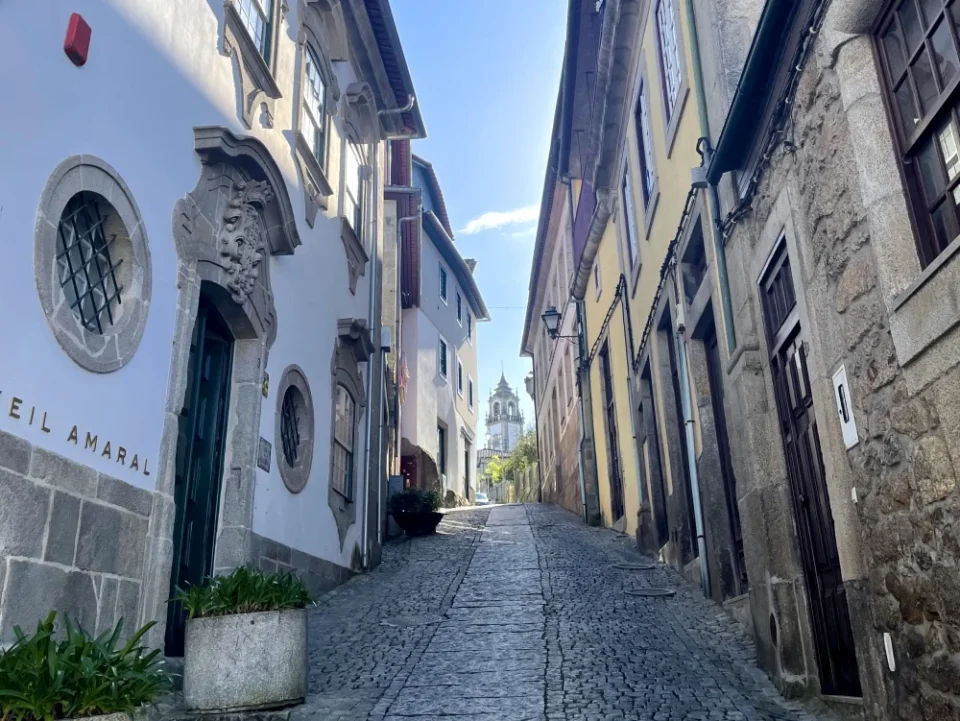Viseu is one of the most underrated Portuguese cities. We need to fix this! Gray granite houses and beautiful temples, green parks, flowers and fountains, restaurants and shopping centers, sports fields and even an ice rink-Viseu has not just received the title of the most comfortable city to live in.
Why do tourists rarely come here? Because of the location. If you are heading from Madrid to Porto, Viseu will be on your way. But traveling within the country, the city is far away from the main tourist locations. If you take a tour to Portugal and arrive in Lisbon or Porto, you can get to Viseu by car or bus.

3 facts about Viseu
- The settlement appeared here in the Iron Age, but it became famous thanks to the Romans and their roads, at the intersection of which it turned out to be. The name of the city, most likely, was also given by Italians. Viseu means “view”in their language. The view from the hill on which the settlement is located is really quite good.
- The city is located on a plateau surrounded by higher mountain ranges: within a 50 km radius are the Serra da Estrela, the Serra da Arada, the Serra do Caramulo and other mountains. The ocean is about 100 km away. This is why Viseu has a special climate: cool, rainy winters (sometimes 0°C at night) and hot, dry summers (about 30-35°C).
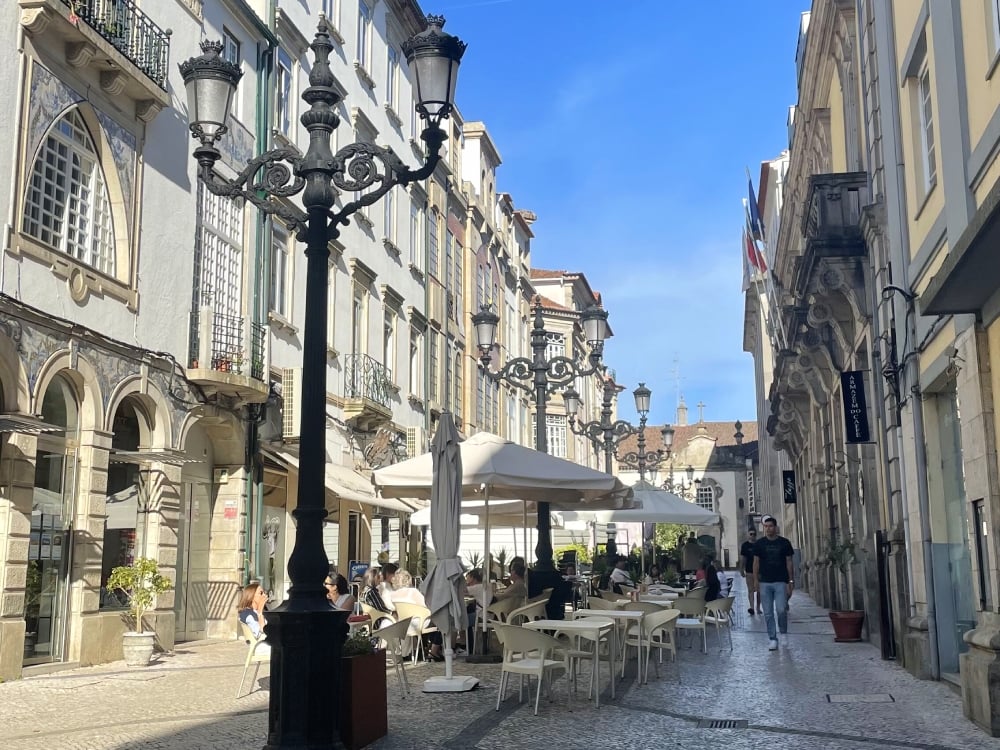
- Viseu is the county center. Approximately 50,000 people live in the city itself, which by Portuguese standards is considered a large settlement.
One day is enough to cover the main attractions. But in the vicinity of the city, there is also something to see. So, before you plan your visit, read my guide.

Viseu Attractions
I like to start exploring the city from the main square, but this time we will start from the park next to it — by the way, you will most likely find a free parking space behind it.
A. Aquilino Ribeiro Park
Until the mid-19th century, this area was a farm attached to the monastery. Nothing has come down from him to this day. But the Church of St. Francis (Igreja de Terceiro Ordem de São Francisco), which is located at the main entrance to the park, has been preserved. The 18th-century Baroque building is remembered for its gilded interior — Portuguese temples are usually more modest in their interior decoration.
The park is named after the Portuguese writer, a native of Viseu. A small pond with a cafe, picnic tables in the shade of ancient trees and a children’s playground — a green oasis in the heart of the city.

B. Republic Square (Praça da República)
We flow smoothly to the main square. Sprawling trees and flowerbeds, wrought-iron lanterns and many shops, a large azuleju and the city hall of the 19th century. One of the most comfortable places in Viseu. Take a cup of coffee, connect to the city’s Wi-Fi and you can work, contemplate the beauty and recharge with active movement around.

This square hosts fairs and other festive events. It’s very nice here on Christmas nights.

C. May 2 Market (Mercado 2 de Maio)
Now you should take a walk along the central pedestrian artery — Via Formosa (Rua Formosa). It appeared in the 19th century on the site of a Roman fortress wall, the remains of which you will see under your feet at the end of the street. Rua Formosa and its neighboring territory often host exhibitions and flea markets.
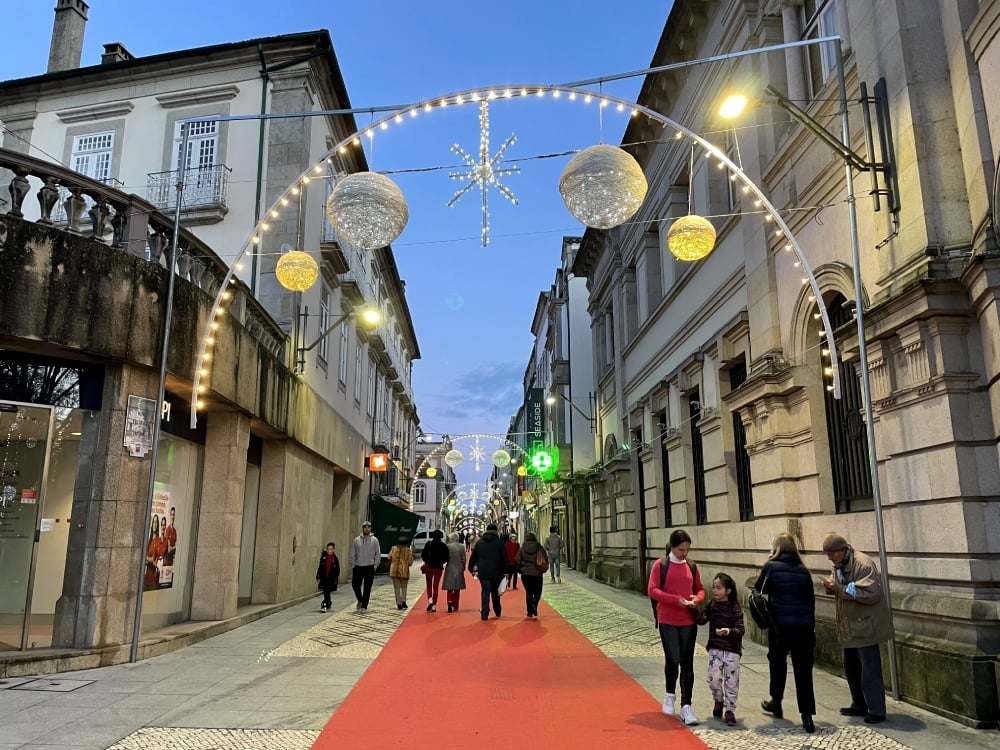
Recently, the “May 2 Market ” was opened here. This is not exactly a market, but rather a platform for events: local wine tastings, concerts, themed evenings. This modern architecture and such a green area has become a new favorite place among the residents of the city.
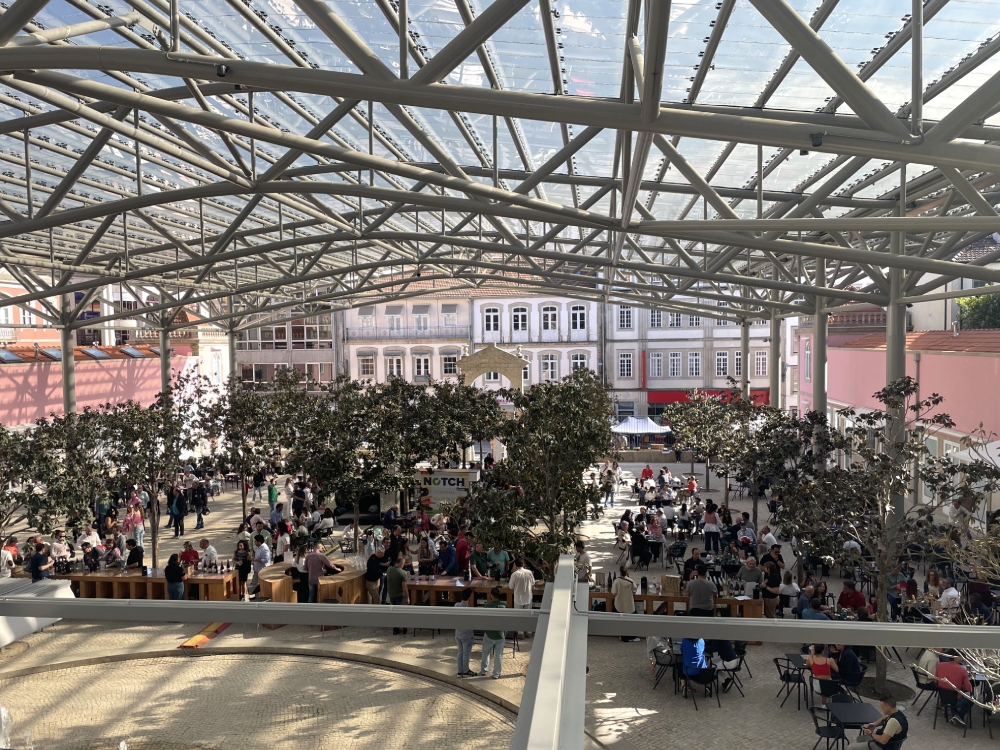
D. Rua Direita
In the Middle Ages, this particular street was the main one. Pay attention to the architecture: typical for these places mansions made of gray granite, lace moldings in the design of window portals, characteristic of the Manueline style, and unusual drainpipes.
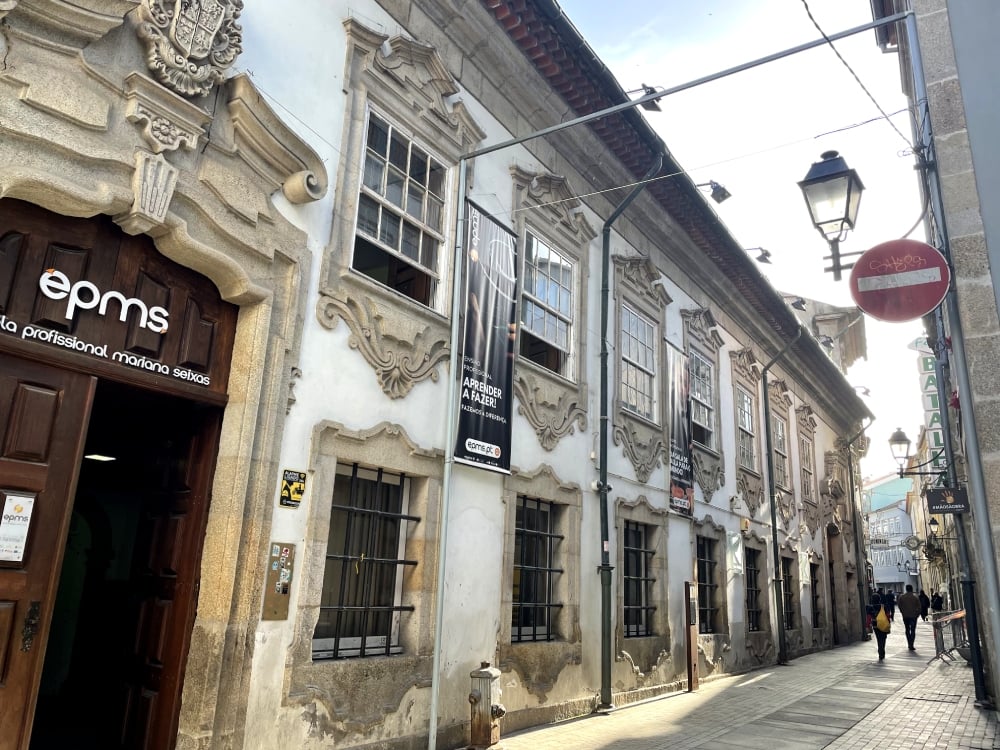
E. Cathedral Square (Praça da Sé)
And here is the former main square of Viseu. The pillar of shame in its center is proof of that. The cathedral was built here in the 13th century. It is famous for its granite altar. Sea ropes and knots on the arches of the temple are typical elements of the Manueline style. Take a look at the courtyard of the church, and then go up to the top floor — there is a museum of sacred art.
The former Bishops ‘ Palace, which is adjacent to the Cathedral, houses the Museu Nacional Grão Vasco, a Portuguese artist of the turn of the 15th and 16th centuries.
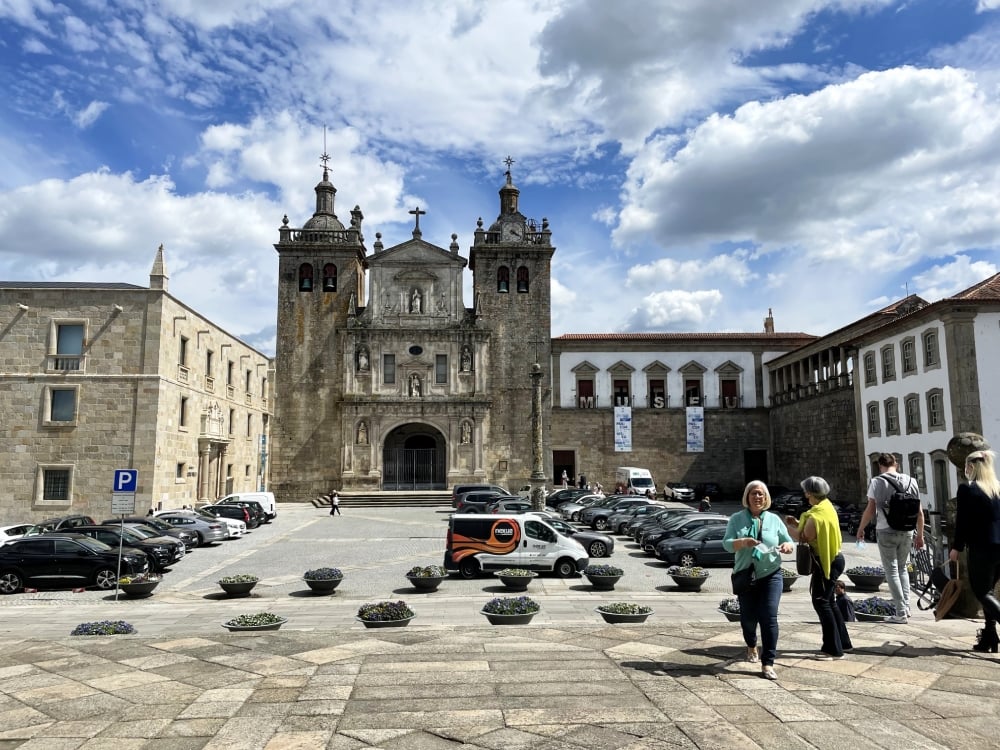
On the other side of the square stands a charming building with two towers – the Church of Mercy (Igreja da Misericordia). The Baroque church was built here in the 16th century, and in the 18th a touch of Rococo was added to the design.
There is an observation deck behind the church. I can’t say that it offers a breathtaking view of a piece of the city and the area where one of the largest fairs in the country is held — San Mateus (Feira de Sao Mateus), you can see.
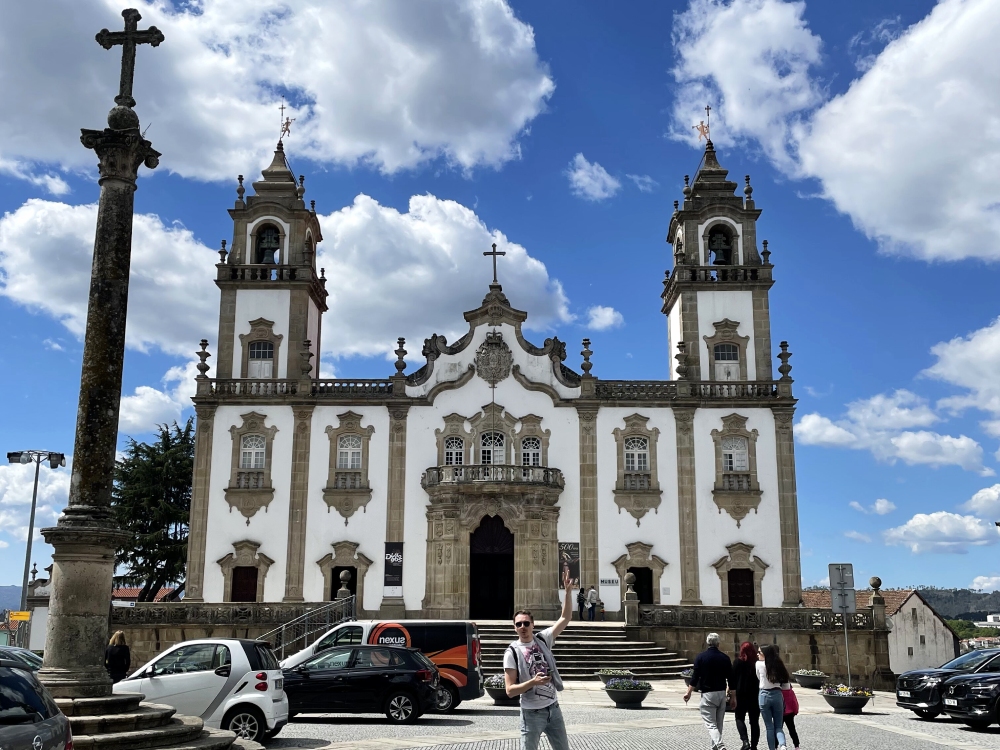
F. Praça D. Duarte
To the side of the Cathedral stands a monument to King Duarte, who was born in Viseu in the late 14th century. Locals and tourists like to sit at outdoor tables in local cafes with a view of the powerful castle wall. This spot is notable for the abundance of houses lined with colorful azuleju tiles.
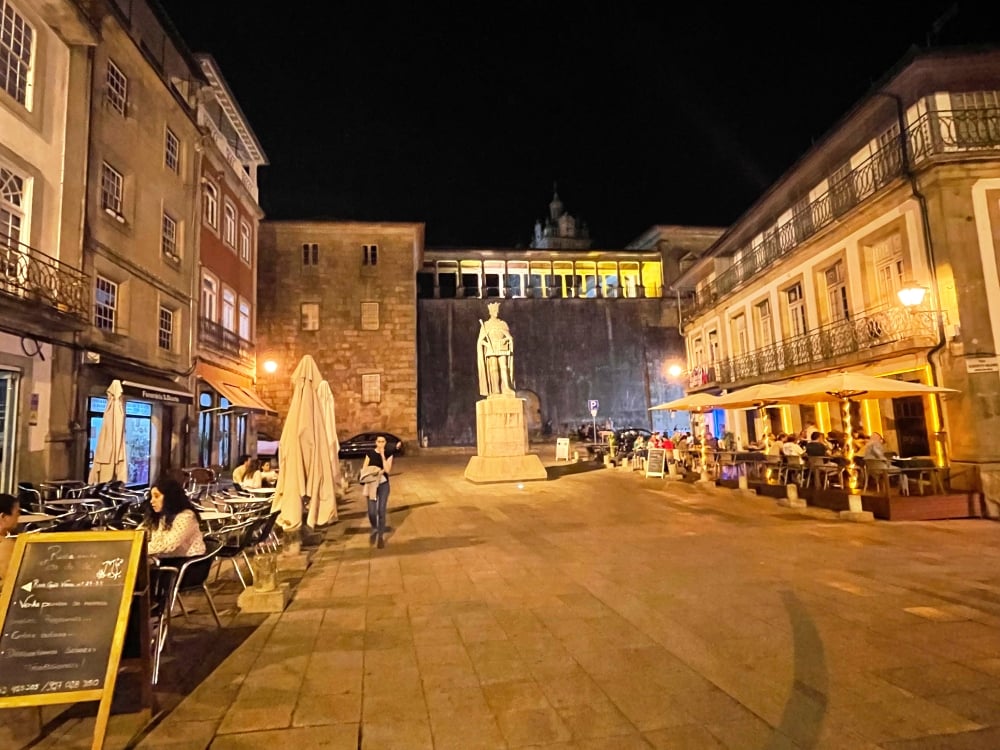
G. Porta do Soar
The gate, preserved from the 15th century, was one of the seven entrances to the city. I suggest going out through them to go down to the Rio Pavia embankment.
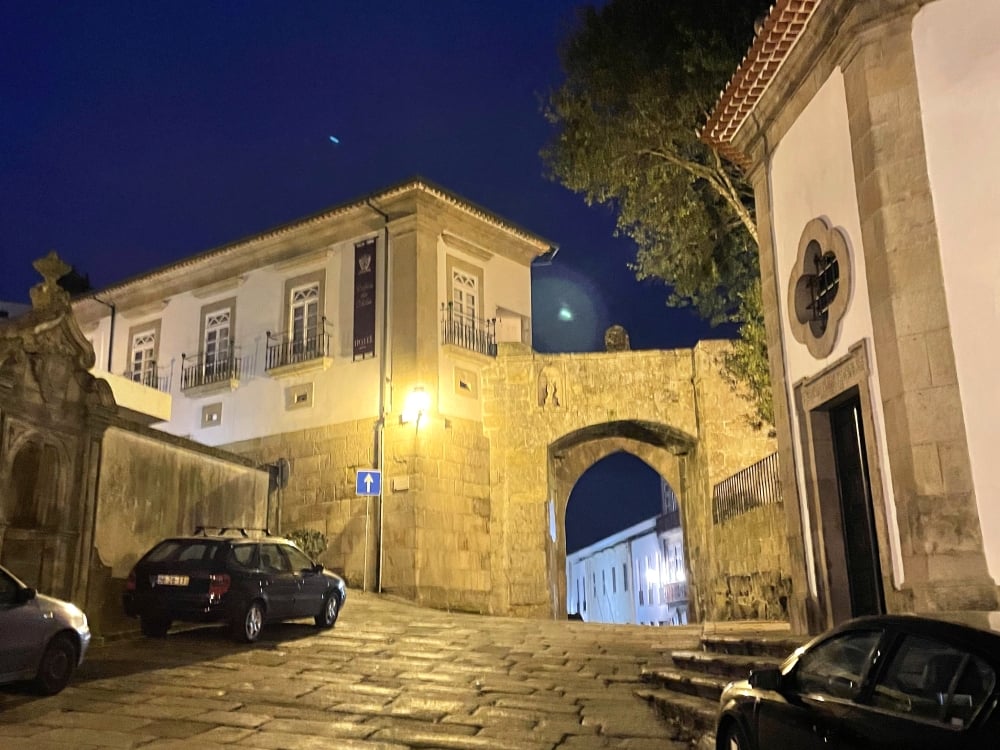
H. Garden of Ribeira (Jardim da Ribeira)
I brought you to this place to show you the view of the upper city. And tell them that it is here that the famous festival-fair of Sao Mateus (Feira de Sao Mateus) is held. The event starts in mid-August and ends on St. Matthew’s Day (September 21). Fireworks, music, carousels, souvenirs, food — every year the fair attracts a large number of visitors.
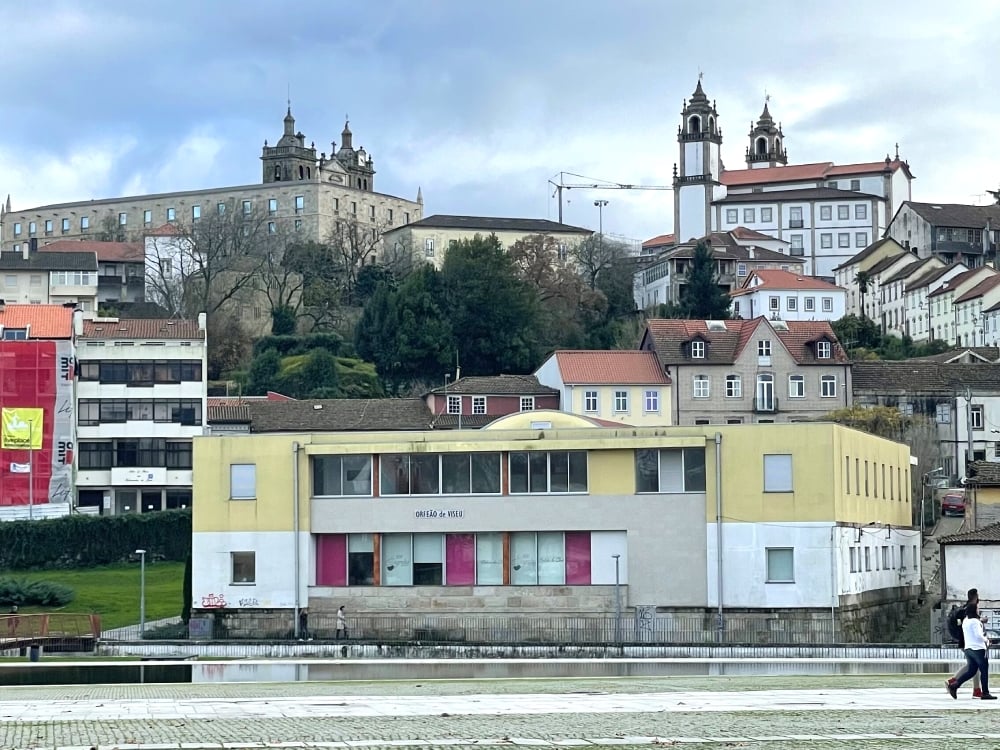
I. Solar do Vinho do Dão
Viseu is the capital of one of the oldest wine regions in Portugal — Dau. It is so called because most of the region’s vineyards are located along the Dau River. Most of the region specializes in red wines, but there are other types. I recommend that you stop by for a tasting session at Solar do Vinho do Dão. The wine shop is located in a palace dating back to the 12th century.
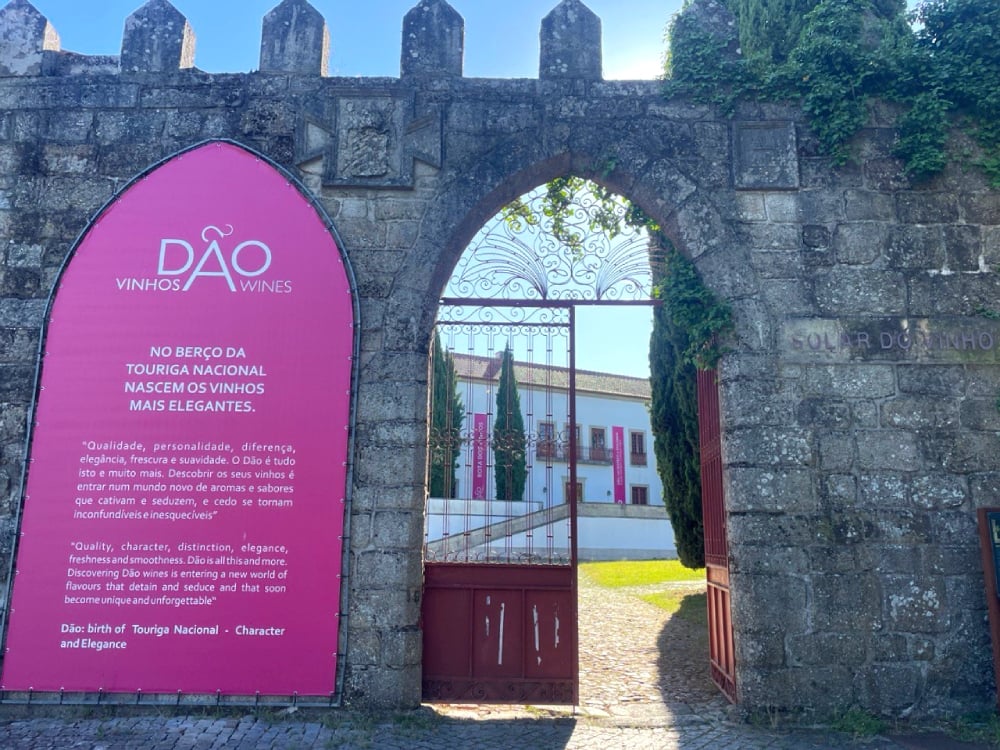
After that, you can take a walk in the Fontelo Park (Mata do Fontelo), which is located just behind the fence. At first glance, it seems almost unkempt, but then you realize that it is just very old. Peacocks roam freely in the park.
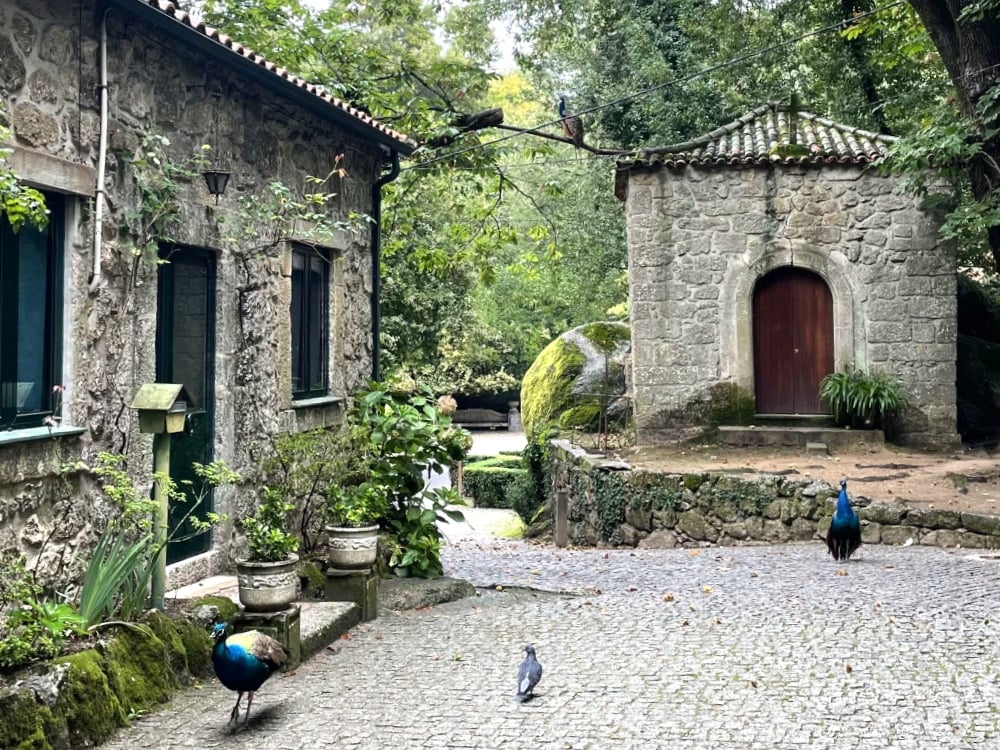
What’s interesting about Viseu?
Thermal springs
The most famous of them is located in the city of Sao Pedro do Sul (Sao Pedro do Sul)- I told about it and the mountains with waterfalls in its vicinity in a separate article. And here I will draw your attention to the nearest hot springs-the Termas de Alcafache Thermal Complex. It is located on the same river Dau. You can ride along it and admire the vineyards at the same time — the nature of these places is picturesque.
Sodium-sulfur water comes out of the ground here, having a temperature of 50°C. It treats rheumatism, osteoarthritis, sciatica, gout, respiratory diseases, colitis and chronic cholecystopathies, as well as some skin diseases. By the way, at the SPA on the Dau embankment, you can dip your feet in a hot tub.

Bike routes
One of them — Ecopista do Vouga-leads from Viseu to San Pedro do Sul. And the second — Ecopista do Dão-from Viseu to Santa Comba Dão. This bike path is the longest in Portugal, with a route of about 50 km. A highway was laid along the route of the former railway line. Rivers, mountains, vineyards-the track is beautiful!
Estates with park areas
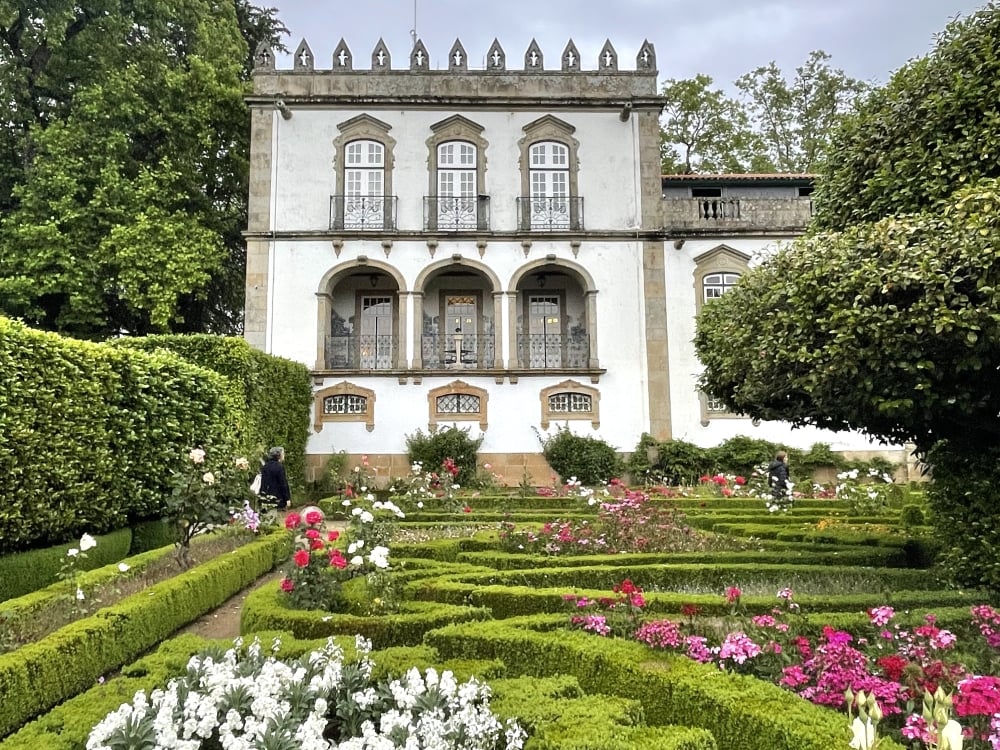
A 17th-century palace in Penalva do Castelo has been transformed into the Casa da Ibnsua Hotel with a restaurant, swimming pool and well-kept garden. Entrance to the territory is free.
Nearby there is another complex with a cool territory, but this is not a manor house, but small authentic houses carefully restored by the hands of the owner. This place is called Eiras do Dão.

The Pink Palace in the city of Mangualde is not so revered by tourists-again, because of its geographical location. But the 18th-century interiors of the estate and its garden are worth paying attention to. Entrance here is paid.
These two cities have their own wineries. To taste the wine they produce, it is not necessary to book a tasting time. In local stores, you will find shelves marked Dão — see the place of manufacture, try it out and enjoy!
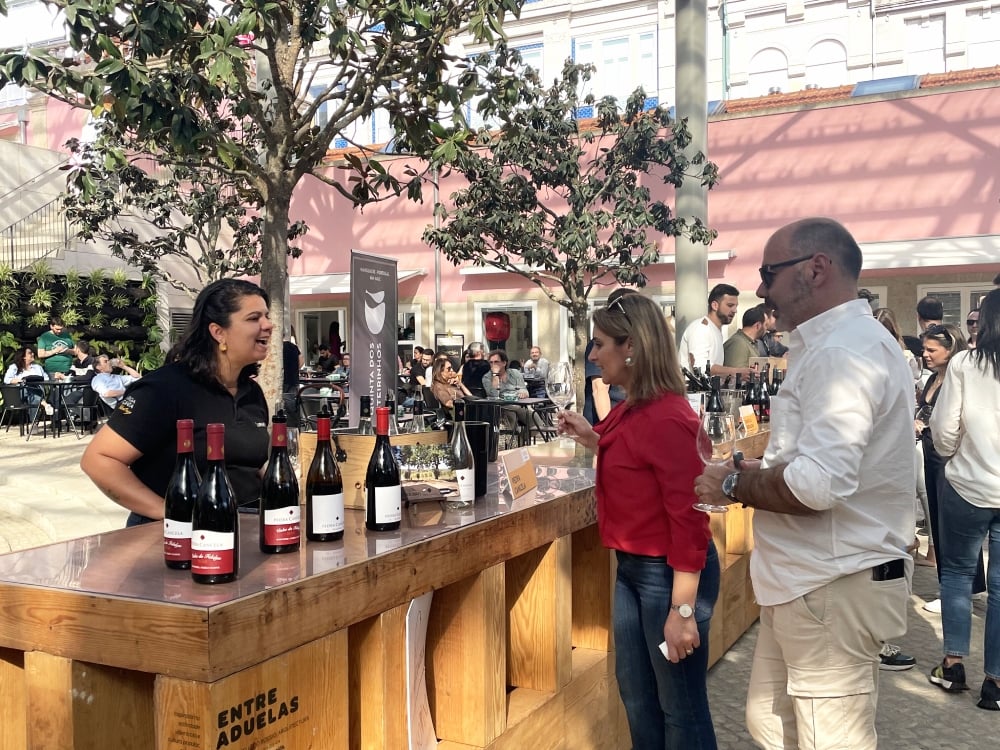
In Portugal, you can travel endlessly! We advice you to go here on your next vacation — there are many articles on the site that will introduce you to the beauty and traditions of this beautiful southern country.

